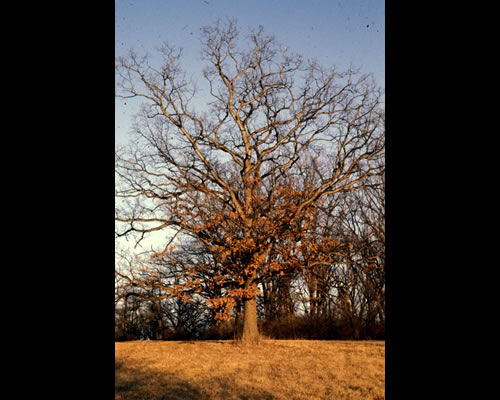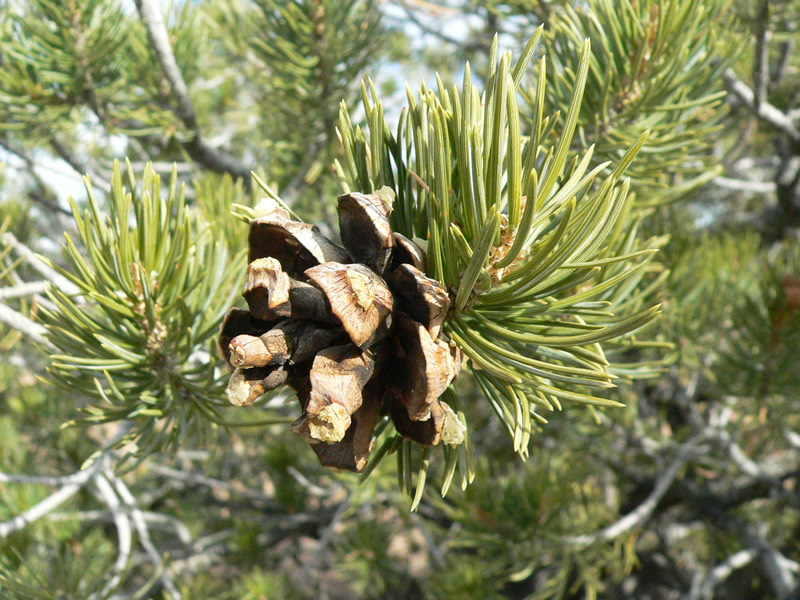Nuts

Nuts are actually fruits. They are defined as dry, single-seeded fruits that have high oil content. They are usually enclosed in a leathery or solid outer layer. In botany terms, nuts are strictly a particular kind of dry fruit that has a single seed, a hard shell, and a protective husk. Chestnuts, hazelnuts, pecans and walnuts fit the true definition of a nut. Peanuts and almonds do not meet the botanical definition of a true nut. Peanuts are actually legumes and a fleshy coat like a plum surrounds almonds. Whether they are true “nuts” or not, people throughout the world enjoy these fruits.
Native North American Nuts
Acorns
Acorns are the fruits produced by oak trees (Quercus spp.). These edible nuts were a food source for indigenous peoples of North America. Acorns played an especially important role in California where several species of oaks overlap.
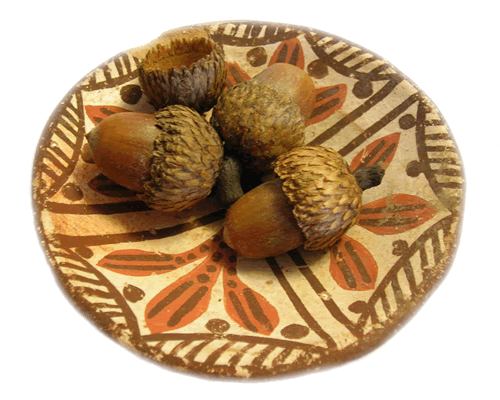 Acorns were a great food source for Native Americans because they could be stored for many years. Photo by Teresa Prendusi.
Acorns were a great food source for Native Americans because they could be stored for many years. Photo by Teresa Prendusi.
These hard-shelled fruits were an important food source because if properly treated in the sun, they could be stored for several years and used when needed. Acorns were stored in caches or on tall poles to protect them from being eaten by squirrels. When prepared for use in foods the ground acorn flower was rinsed in a stream to remove bitter tasting tannins.
- Native American tribes used fire to promote the production of acorns within oak groves.
- Ground fires were used to kill the larvae of acorn moths and acorn weevils that can prove disasterous to the acorn crop.
- Burning occurred during the dormancy period in the soil and the fires released nutrients bound in dead leaves and other plant debris into the soil.
- Most North American oaks tolerate light fires, especially when consistent burning has eliminated woody fuel accumulation around their trunks.
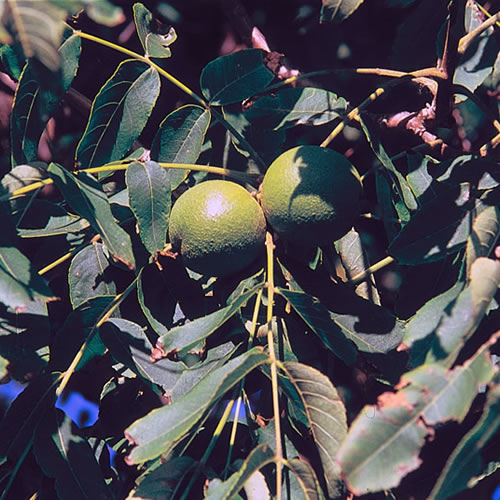 Black walnuts (Juglans nigra) have a strong taste and a very hard shell.
Black walnuts (Juglans nigra) have a strong taste and a very hard shell.
Black Walnuts
Black Walnuts (Juglans nigra) are native to North America. The nuts are primarily used in ice cream and candy.
- Walnut trees are notorious for inhibiting growth of other plants around them. They produce chemicals in their leaves that are leached out by rain and soak into ground around the trunk.
- Farmers planted these trees around farm animals to keep the flies away because they erroneously believed that the trees contained insecticides.
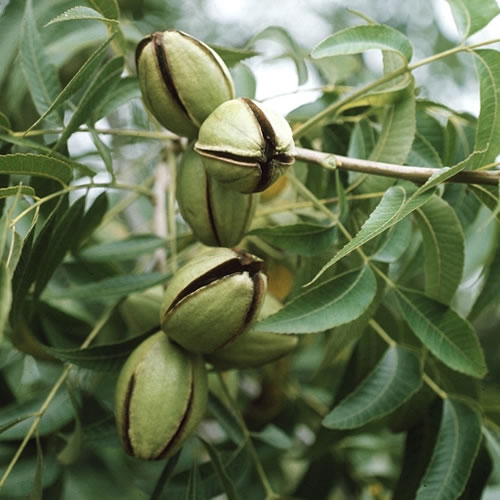 Pecan (Carya illinoinensis). Photo by Jerry A. Payne, USDA Agricultural Research Service, Bugwood.org.
Pecan (Carya illinoinensis). Photo by Jerry A. Payne, USDA Agricultural Research Service, Bugwood.org.
Pecans
Pecans (Carya illinoinensis) are a commercially important species of nut native to the American Southeast. Pecans are now grown extensively in the southeastern United States and are a prominent part of the regional cuisine.
Historically native peoples and early American settlers used pecans because they were easily accessed along major waterways and were far easier to shell than other North American nut species.
Pine Nuts
Pine nuts (Pinus spp.) are not considered true nuts in the botanical sense but are in fact the edible seeds produced by pine trees. Roughly, 20 species of pine produce seeds large enough to be worth harvesting.
Seeds of the piñon pines were highly prized by Native Americans living in the desert southwest, and were especially important in the diet because they provided an important plant staple that was high in both fats and carbohydrates—a characteristic rare for most other edible seeds, roots, berries, and fruits. Piñon, or pine, nuts are also one of the easiest plant foods to harvest and store, and they were often abundant. Pine “nuts” can also be pressed into oil, which is reported to aid in appetite suppression.
Contact your local National Forest Office to find out if pine nuts are produced in the National Forest near you. A permit may be required for collection.
Did You Know?
- Before 1900, American Chestnuts, Castanea dentata, were common in the northeastern United States.
- In 1890, the chestnut blight, which is caused by a fungus, arrived in the U.S. from Asia. It probably spread from imported nursery plants.
- Between 1904 and 1950, the disease killed or infected virtually all of the U.S. fruit-bearing American chestnuts.


